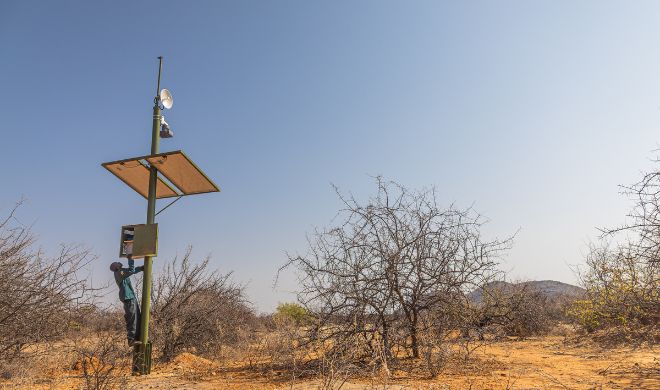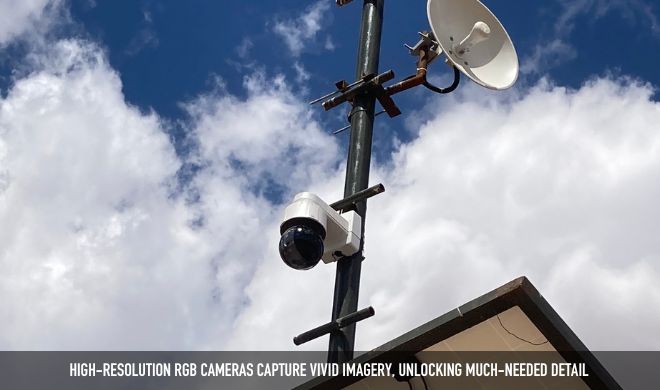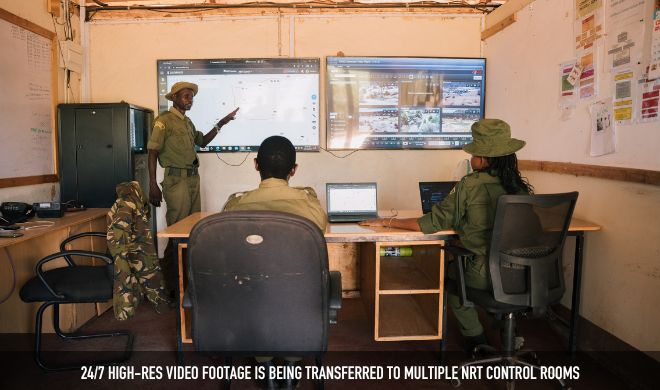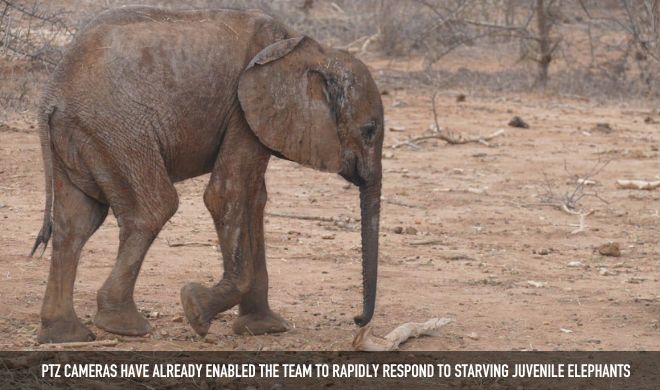Using PTZ cameras to monitor and safeguard critically endangered species at the first community-owned Black Rhino sanctuary
Partners: Northern Rangelands Trust, Dimension Data, Cisco
Key Species: Black Rhino, Grevy's zebra, African Elephant, Rüppell's vulture, Striped hyena, Gerenuk, Reticulated giraffe, Somali ostrich
Deep within the heart of Kenya's enchanting landscape lies the remote and captivating Sera Wildlife Sanctuary. Sera has earned its distinction as the pioneering and sole community-managed Black Rhino sanctuary in East Africa. Serving as a vital ecological refuge, Sera nurtures a diverse and endangered array of species. Its journey began in 2015 with a humble founding population of 10 black rhinos, but today, Sera stands as a proud guardian, sheltering 21 critically endangered black rhinos. While Black Rhino numbers have plummeted elsewhere, Sera’s population has more than doubled.
These majestic creatures have brought more than conservation; they've become a source of prosperity for the local community. Through sustainable practices, the sanctuary has generated revenue for livelihood projects and opened doors to 114 employment opportunities ranging from tourism roles to rhino monitors and park maintenance staff. Meanwhile, tourism revenue from Saruni Rhino Lodge is also boosting local education and the creation of small businesses.
To bolster Sera's conservation and wildlife monitoring initiatives, together with our partners Northern Rangelands Trust (NRT), engineers from Dimension Data, and donated equipment from Cisco, we have established new methods of wildlife surveillance.
Robust rhino monitoring
One of the most recent achievements, which has proven indispensable for NRT's efficiency and security, involves the deployment of high-resolution Pan-Tilt-Zoom (PTZ) cameras at six critical watering holes. Dimension Data's engineering team, integrated the cameras into NRT's robust network infrastructure, ensuring a stable, high-bandwidth connection that can live stream detailed video footage over 100 kilometers (a 40 minute flight) across Kenya's arid and challenging bushland terrain, to NRT's central control room.
For nearly three years, the solution has been facilitating continuous wildlife monitoring, with a level of detail and clarity that was once inconceivable. For instance, the high-resolution RGB cameras capture such vivid imagery that rangers can now easily distinguish individual rhinos right from the control room. Sera is a desert environment, where animals regularly visit the same waterholes, so if an individual Rhino is not regularly spotted, the conservation team can quickly respond.
Samuel Lekimaroro, NRT’s Wildlife Protection Manager, explains, "Before these cameras, we had to manually search for and track each rhino, taking photographs to upload them to the Kenyan Wildlife Service database, which is a legal requirement for us to account for every rhino."
“The rhinos have to visit these waterholes, so now we can simply locate them on the cameras, zoom in, identify them and take a picture. This streamlined process and reduction in staff times allows us to reallocate resources to stronger rhino protection efforts."
With 24/7 accessibility, these cameras also serve as effective deterrents against rhino poachers and aid in detecting any community members entering the sanctuary. This prompts rapid notifications to the teams, allowing them to safely escort individuals out of the sanctuary without any contact with the rhinos.
Fast intervention in times of crisis
Sadly, Sera recently encountered a severe challenge - a relentless two-year drought that periodically left vast stretches of land parched. With the capability to pan, tilt and zoom in on these bustling watering holes, NRT's team is tracking the movements, behaviours and overall health of their Black Rhinos and numerous other species, including monitoring the reintroduction of critically endangered Grévy's zebra to the area.
The cameras enable NRT to swiftly detect early signs of distress or illness, enabling timely intervention and medical assistance. The camera feeds are continuously monitored, and real-time updates are shared via WhatsApp, serving as vital information for life-saving interventions. For instance, these cameras detected starving juvenile elephants, allowing the team to respond promptly with much-needed sustenance.
“During the recent drought, we could tactically allocate feed for wildlife, based on the body conditions we were picking up on the camera. The condition of the rhinos dropped to a body score of 2.5 (out of 5). But with improved vegetation, rain and food management the cameras are now showing our rhinos at a body score of 4.5. Which is reassuring,” says Samuel.
The cameras have also detected rhinos fighting at watering holes, enabling a rapid response team to come and separate them.
Growing use-cases of PTZ cameras
The cameras have also been paramount in detecting new species using the site, which were previously unknown to rangers.
“We’ve now detected more bird life than ever before, including the endangered Rüppell's vulture. The cameras have also picked up striped hyenas - which is another first for us,” says Samuel.
He adds, “These cameras also enable our team to monitor water levels so that if they drop too long we have enough time to intervene and keep water available.”






